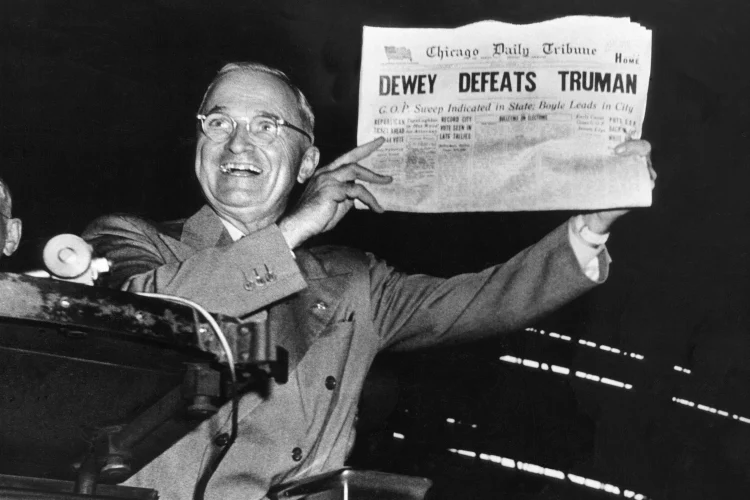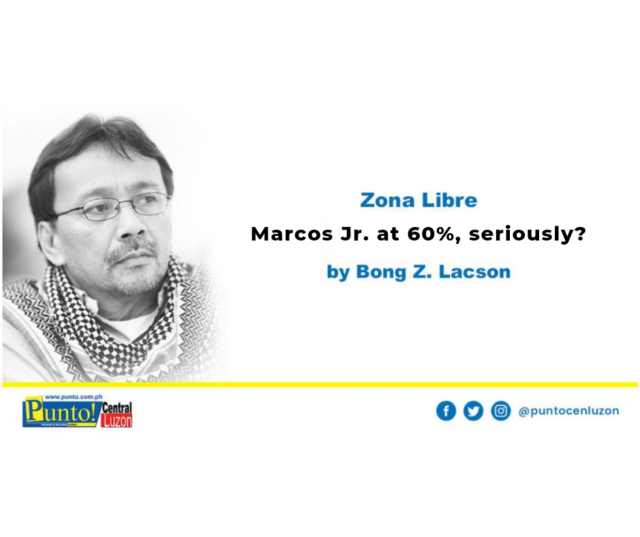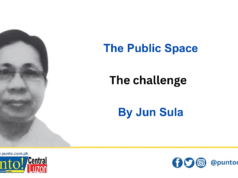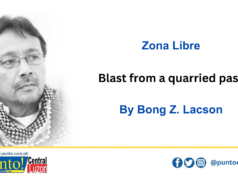 Triumphant Truman displays erroneous Chicago Daily Tribune banner headline on the result of the 1948 US presidential polls. Getty Images/grabbed from web
Triumphant Truman displays erroneous Chicago Daily Tribune banner headline on the result of the 1948 US presidential polls. Getty Images/grabbed from web
“OBVIOUSLY HE has captured the imagination of a good percentage of our voters. Also, he has more than adequate resources to sustain his presence in social media, his caravans, his campaign. Plus, his name of course and the association with his father has definitely benefited him from that.”
So spoke Pulse Asia executive director Ana Tabunda of the February 18-23 survey her company conducted showing former senator Ferdinand “Bongbong” Marcos Jr. keeping his lead over all other presidential aspirants.
Marcos Jr. polled 60% to VP Leni Robredo’s 15%, Manila Mayor Isko Moreno’s 10%, Sen. Manny Pacquiao’s 8%, and Sen. Ping Lacson’s 2%. The rest of the presidential timbers obviously axed unceremoniously from the survey’s interview schedule.
And Pulse Asia has never been wrong in predicting the next president, so stressed Tabunda in ANC Headstart.
Gloating over the results, Marcos Jr. spox Vic Rodriguez said the survey “has again debunked the fake narrative being forced by some small segment of our society on the current sentiments” of Filipinos on the May 9 elections.
Rubbing it in: “While some of them may claim that they are winning in ‘Twitter’ and ‘Google’ searches, frontrunner Bongbong Marcos is winning the battle with the Filipino people.” So was he quoted in media.
Quick and querulous are the dismissals of the survey results as the “false pulse” of the electorate, Pacquiao and Lacson unbothered a bit.
The Kakampink movement of Robredo went the full nine yards questioning the accuracy of the methodology, disparaging the implausibility of the results.
Argument 1: Marcos polled 60% of 2,400 adult respondents – that is a total of 1,440 individuals – and it’s already reflective of the preference of the national electorate. Robredo has been gathering mammoth audiences by the scores of thousands in rallies in Naga, Quezon City, Cebu, Cagayan de Oro, Iloilo, Cavite, Bulacan and Bacolor, even in the so-called Solid North province of Isabela and that’s 15%?
Argument 2: Marcos has 60% of the vote when he could not even get decent numbers – hakot and takot notwithstanding – to rallies that his minions had to cancel. Resibo: Antique, Mindoro, Tarlac, Paranaque.
Argument 3: Marcos has 60% preference and still his handlers have to multiply a thousandfold the measly 18,000 attendees and spectators to his caravan-rally in Las Piñas to an incredible 500,000?
Resibo from CNN: “Las Piñas City Police Chief Col. Jaime Santos on Monday confirmed that the police estimated around 5,000 people were inside The Tent, Global South in the city, where Marcos and other candidates of UniTeam held a rally. He also confirmed that around 3,000 people gathered outside the venue, while over 10,000 participated in the caravan.”
Aye, there is more, much more accuracy in surveying lands than people here.
And once more the broken record that I am when it comes to opinion polling plays anew: Believe in published surveys at your own peril.
Case 1: In 2007, then-Rep. Rey Aquino was so gung-ho at taking back the San Fernando mayoralty from incumbent Oscar Rodriguez – “Pamacsi que y Oca” – with a 60 to 40 edge in surveys. Oca won, as he did in all but two – 1992 and 2016 – electoral contests he joined: 1987, 1995, 1998, 2001 congressional races, and the 2004 mayorship, even as he always lost in all published surveys on those elections.
Case 2: Crisostomo Garbo was never the top choice in any survey but won all elections he entered – as Mabalacat councilor twice, first district board member three times, vice mayor once, and mayor now twice. Currently, Garbo is polled as winning in one survey while another showed him losing to political newbie broadcaster Deng Pangilinan.
So, again, I write: Surveys are meant to serve as campaign guideposts. Their efficacy to gain some bandwagon effect has long been lost because of surfeit and the incredibility of results.
Which makes this whole affair of press releasing survey results, whether factual or false, a double-edged sword. Propaganda – as these survey releases are nothing but – can always backfire. With the outcome diametric to the intended results. Propa-pangit. The spinmeisters of my generation coined that word for it.
The perils of opinion polls – along with the overconfidence they bring to their purported winners – are best exemplified in the (in)famous “Dewey defeats Truman” US prudential elections of 1948.
New York Governor Thomas Dewey was by most indications in the polls was on the way to an easy victory over incumbent President Harry Truman who was into his first election for president, having succeeded Franklin D. Roosevelt who died in office in 1945.
Truman’s Democratic Party had splintered into three factions and pre-election polls signaled Dewey was so comfortably ahead that one of the three national pollsters at that time, Elmo Roper, declared he would release no further survey results unless a political miracle intervened.
So confident of winning that Dewey was said to have told supporters: “… always remember, when you’re leading, don’t talk.”
On the other hand, Truman “had just one strategy—attack, attack, attack, carry the fight to the enemy’s camp,” so we read in his Pulitzer Prize-winning biography by David McCullough.
The outcome of the elections – and with it “the epic failure of the pollsters, pundits, and the press” – is memorialized in that picture of Truman in triumph holding aloft the Chicago Daily Tribune with the erroneous banner headline “Dewey defeats Truman.”
No, I am neither parallelizing past and present political events nor insinuating anything.





